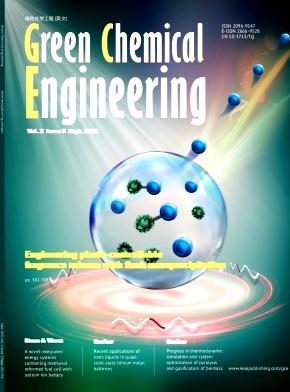Multi-criteria computational screening of [BMIM][DCA]@MOF composites for CO2 capture
IF 9.1
Q1 ENGINEERING, CHEMICAL
引用次数: 0
Abstract
Ionic liquid (IL) can be inserted into metal organic framework (MOF) to form IL@MOF composite with enhanced properties. In this work, hypothetical IL@MOFs were computationally constructed and screened by integrating molecular simulation and convolutional neural network (CNN) for CO2 capture. First, the IL [BMIM][DCA] with a large CO2 solubility was inserted into 1631 pre-selected Computational-Ready Experimental (CoRE) MOFs to create hypothetical IL@MOFs. Then, given the temperature and pressure of adsorption and desorption, the CO2/N2 selectivity and CO2 working capacity of 700 representative IL@MOFs were assessed via molecular simulations. Based on the results, two CNN models were trained and used to predict the performance of other IL@MOFs, which reduces the computational costs effectively. By combining the simulation results and CNN model predictions, 22 IL@MOFs with top-ranked performance were identified. Three distinct ones IL@HABDAS, IL@GUBKUL, and IL@MARJAQ were chosen for explicit analysis. It was found that a desired balance between CO2/N2 selectivity and CO2 working capacity can be obtained by inserting the optimal number of IL molecules. This helps guide a novel design of IL@MOF composites with advanced performance on carbon capture.

用于二氧化碳捕获的[BMIM][DCA]@MOF 复合材料的多标准计算筛选
离子液体(IL)可以插入到金属有机骨架(MOF)中,形成具有增强性能的IL@MOF复合材料。在这项工作中,通过整合分子模拟和卷积神经网络(CNN)进行CO2捕获,计算构建和筛选假设的IL@MOFs。首先,将具有大CO2溶解度的IL [BMIM][DCA]插入到1631个预先选择的计算就绪实验(CoRE) mof中,以创建假设的IL@MOFs。然后,在给定吸附和解吸温度和压力的情况下,通过分子模拟评估了700个具有代表性的IL@MOFs的CO2/N2选择性和CO2工作容量。在此基础上,训练两个CNN模型并用于预测其他IL@MOFs的性能,有效地降低了计算成本。结合仿真结果和CNN模型预测,确定了22个性能排名靠前的IL@MOFs。三个不同的IL@HABDAS, IL@GUBKUL和IL@MARJAQ被选择进行明确的分析。结果表明,通过插入最佳数量的IL分子,可以获得理想的CO2/N2选择性和CO2工作容量之间的平衡。这有助于指导IL@MOF复合材料的新设计,具有先进的碳捕获性能。
本文章由计算机程序翻译,如有差异,请以英文原文为准。
求助全文
约1分钟内获得全文
求助全文
来源期刊

Green Chemical Engineering
Process Chemistry and Technology, Catalysis, Filtration and Separation
CiteScore
11.60
自引率
0.00%
发文量
58
审稿时长
51 days
 求助内容:
求助内容: 应助结果提醒方式:
应助结果提醒方式:


